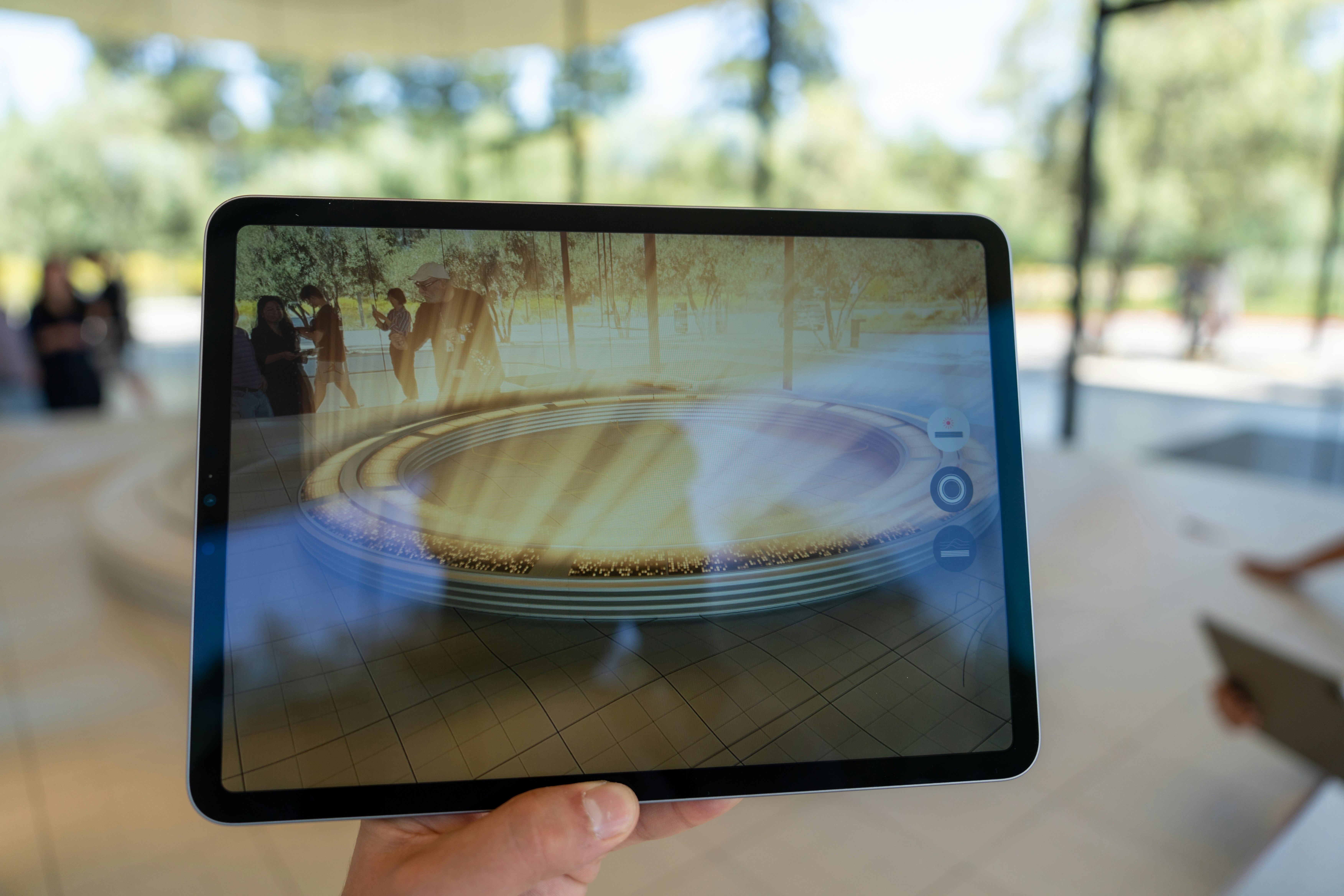Introduction to Augmented Reality in the Workplace
Augmented reality (AR) is a transformative technology that overlays digital information onto the physical world, enhancing the user’s perception of their environment. As opposed to virtual reality (VR), which immerses users in a completely digital experience, AR integrates interactive elements with real-world scenarios. This distinction is crucial as it highlights AR’s potential to revolutionize the workplace by providing professionals with additional contextual information and interactive experiences that promote productivity.
The influence of AR in various industries is rapidly growing, driven by technological advancements and increasing accessibility. Features such as heads-up displays, spatial mapping, and real-time data visualization have allowed AR to penetrate sectors ranging from manufacturing and healthcare to education and retail. With the advent of affordable AR devices and software, organizations can now integrate these interfaces into daily workflows more easily, thus enhancing efficiency and collaboration among teams.
In manufacturing, for instance, AR can assist workers by providing real-time instructions or maintenance guidance as they perform tasks, reducing downtime and minimizing errors. Similarly, in training environments, AR offers immersive learning experiences, enabling employees to practice their skills in a controlled, yet interactive setting. This blend of the virtual and physical not only improves knowledge retention but also boosts engagement and confidence among trainees.
As AR technology continues to evolve, its deployment in the workplace is set to increase. Companies are beginning to recognize the value that AR can bring, from streamlining processes to improving safety standards. By understanding the fundamentals of augmented reality and its applications, organizations can position themselves to harness its potential effectively, making informed decisions that will benefit their workforce and overall productivity.
Benefits of AR Interfaces for Productivity
Augmented Reality (AR) interfaces are revolutionizing productivity in the workplace by bridging the gap between digital and physical environments. One primary benefit of AR technology is its ability to improve workflow efficiency. By overlaying digital information onto the real world, employees can access critical data without disrupting their tasks. This seamless integration allows workers to visually analyze complex datasets or schematics while performing hands-on activities, significantly reducing the time spent searching for information.
Collaboration is another area where AR interfaces shine, especially in remote work scenarios. Enhanced communication tools that utilize AR enable team members to share visual insights in real-time, allowing for more effective brainstorming sessions and project updates. For companies with distributed teams, AR can facilitate joint problem-solving sessions where participants visualize and manipulate 3D models, making it easier to engage with complex ideas and encourage innovative solutions.
Moreover, AR interfaces expedite problem-solving processes by providing instant access to relevant resources. For instance, maintenance technicians equipped with AR glasses can receive live troubleshooting support from experts in different locations. This direct assistance reduces the time taken to resolve issues and minimizes downtime, ultimately contributing to increased productivity. A notable example is Boeing, which leverages AR to assist technicians in wiring harness assembly, resulting in a 90% reduction in rework and significantly expedited assembly times.
In addition to improving efficiency and facilitating collaboration, AR interfaces also enhance training and onboarding processes. By immersing new employees in realistic 3D simulations, companies can provide hands-on experience in a controlled environment. This not only aids in skill development but also shortens the learning curve, thereby allowing new hires to contribute to team goals more quickly. Overall, the integration of AR technology into the workplace holds transformative potential for productivity, fostering a more connected and efficient working environment.
Industries Leveraging Augmented Reality
Augmented Reality (AR) technology has made significant inroads across various industries, fundamentally altering work practices and enhancing productivity. One prominent sector benefiting from AR is manufacturing. Through the implementation of AR interfaces, manufacturers streamline processes by providing real-time information to workers on assembly lines. These interfaces can overlay schematics and instructions directly onto physical equipment, minimizing errors and reducing training time.
In the healthcare domain, AR aids medical professionals during surgeries by projecting critical information, such as patient data and anatomical overlays, directly onto the operating field. This technology not only improves precision but also enhances the capabilities of surgeons by offering a comprehensive view of underlying structures, which is particularly vital in complex procedures. Moreover, AR applications have been developed for educational purposes, allowing students to visualize intricate concepts and interact with 3D models. This immersive learning experience can significantly improve retention and understanding of complex subject matters.
Retail is another sector experiencing a transformation due to AR. Businesses leverage this technology to provide virtual try-ons and interactive displays, which enhance customer engagement and the shopping experience. Shoppers can visualize how products might look or fit, reducing the likelihood of returns and boosting customer satisfaction. In addition, the logistics industry utilizes AR for improved warehouse management and navigation. Workers equipped with AR glasses can receive step-by-step instructions and real-time data to optimize picking and packing processes, ultimately enhancing operational efficiency.
This widespread adoption of AR across various sectors underscores its potential in revolutionizing traditional work practices. From manufacturing to healthcare, retail, education, and logistics, augmented reality technologies offer valuable solutions that not only improve productivity but also foster innovation within the workplace.
Key Technologies Enabling AR in the Workplace
Augmented Reality (AR) has gained significant traction in modern workplaces, enhancing productivity and transforming how tasks are approached. Several key technologies are essential for implementing AR interfaces effectively. The foundation of AR lies in both hardware and software components working in tandem to create immersive experiences.
On the hardware side, AR glasses are at the forefront of this technological evolution. Devices such as Microsoft HoloLens and Google Glass use advanced sensors and displays to overlay digital information onto the real-world environment, seamlessly integrating virtual elements into users’ fields of view. These wearables typically include high-resolution cameras, gesture recognition capabilities, and spatial awareness, allowing for intuitive interaction with AR content. Smartphones and tablets also play a crucial role in delivering AR experiences, utilizing built-in cameras and sensors to activate AR applications through mobile platforms.
In addition to hardware, software frameworks and development tools are fundamental for creating AR applications. Tools such as ARKit for iOS and ARCore for Android enable developers to create rich AR experiences by providing essential functionalities such as motion tracking, environmental understanding, and light estimation. These frameworks simplify the development process for businesses looking to implement AR solutions, ensuring that they are accessible and efficient.
Moreover, the integration of cloud computing and edge computing solutions allows real-time processing of data, enhancing the responsiveness of AR applications in the workplace. This synergy between hardware and software fosters an environment where AR can be employed for multiple purposes, including training simulations, remote assistance, and collaborative projects. As these technologies continue to evolve, the potential for AR to transform workplace productivity grows exponentially.
Case Studies: Successful AR Implementation
Augmented Reality (AR) has emerged as a transformative technology, enabling organizations across various industries to enhance productivity and efficiency. Several case studies illustrate the successful implementation of AR interfaces, showcasing the challenges faced and the innovative solutions employed.
One prominent example is Boeing, a leading aerospace manufacturer that adopted AR technology in its assembly processes. Boeing faced significant challenges in streamlining its wiring and assembly tasks, which were time-consuming and prone to human error. By integrating AR headsets, the company provided its technicians with visual overlays that guided them through complex assembly steps. The implementation of AR interfaces led to a remarkable 40% reduction in assembly time and a significant decrease in error rates, demonstrating the technology’s capacity to enhance operational efficiency substantially.
Another notable case is that of the automotive giant Volkswagen. The company turned to AR to improve its maintenance and training procedures. Technicians equipped with AR glasses received real-time, hands-free guidance on vehicle repairs, significantly reducing the time taken for troubleshooting. The outcome of this implementation was a 25% decrease in service times and improved customer satisfaction due to faster turnaround. Additionally, AR-supported training programs helped new employees become proficient more rapidly, ensuring that they contributed effectively to production goals sooner.
In the healthcare sector, the use of AR has shown promising results in training and surgical procedures. The case of Osum Healthcare illustrates this point; they implemented AR solutions to facilitate training for surgical staff. By incorporating 3D visualizations into their training curriculum, they improved knowledge retention and hands-on skills among trainees. The AR intervention led to a 30% improvement in training outcomes, underscoring its role in enhancing workforce capability.
These case studies exemplify the transformative impacts that AR can have when effectively implemented. Organizations are increasingly recognizing AR’s potential, and as more success stories emerge, its adoption is likely to grow across diverse sectors.
Challenges and Considerations with AR at Work
While augmented reality (AR) technology offers numerous advantages for enhancing productivity in the workplace, there are several challenges and considerations that businesses must address during implementation. One of the primary concerns is the cost associated with AR technology. The initial investment in hardware, software, and ongoing maintenance can be substantial, particularly for small to medium-sized enterprises. It is essential for businesses to conduct a thorough cost-benefit analysis to determine the potential return on investment before committing to AR solutions.
Another critical consideration is the integration of AR interfaces with existing systems. Organizations may already have established workflows and technologies, and introducing AR can create compatibility issues. It is crucial to assess how AR solutions can seamlessly fit into the current infrastructure, which may require additional investments in customization or system upgrades. Collaborating with technology partners who have experience in implementing AR can help mitigate these potential hurdles.
Employee training is another significant challenge when adopting AR technology. Workers may be resistant to change or may lack the necessary skills to utilize AR effectively. Organizations should prioritize comprehensive training programs that guide employees through the transition, ensuring they understand how to leverage AR interfaces to enhance their productivity. Ongoing support and resources should also be made available to encourage continuous learning and adaptation to new tools.
Lastly, concerns regarding data security and privacy cannot be overlooked. The implementation of AR solutions may lead to the collection and processing of sensitive company information and personal data from employees. Businesses must establish clear policies and safeguards to protect this data and comply with regulations to maintain trust and prevent potential breaches. By proactively addressing these challenges and implementing strategic solutions, organizations can effectively harness the power of AR to improve productivity in the workplace.
Future Trends in Augmented Reality at Work
As the landscape of technology continues to evolve, augmented reality (AR) is poised to transform the workplace significantly. With advancements in artificial intelligence (AI), AR is expected to offer more sophisticated and intuitive interfaces, enhancing user experience and productivity. The integration of AI algorithms with AR technologies will allow organizations to create personalized experiences that adapt to individual user needs. This evolution can lead to improved training scenarios, where AR applications can modify the information displayed based on the user’s proficiency, thereby streamlining the learning curve and increasing overall efficiency.
In addition, emerging technologies such as spatial computing are beginning to play a crucial role in how AR interfaces are developed and utilized. By allowing virtual elements to coexist within the physical environment, these innovations will enable workers to interact with digital data in a more immersive and efficient manner. Sectors such as manufacturing, retail, and healthcare are expected to see a marked enhancement in operations as AR interfaces support real-time data visualization and collaborative problem-solving, paving the way for innovative applications.
Furthermore, the increasing accessibility of AR tools and devices indicates a trend towards broader adoption across various industries. As the technology becomes more cost-effective, small and medium-sized enterprises will also begin leveraging AR for operational improvements. The future may see AR applications designed not only for niche functions but also for general productivity enhancements, thereby integrating AR into everyday tasks.
Ultimately, as companies explore the potential of AR, we can anticipate a surge in innovative uses of AR interfaces that could dramatically shift how work is conducted. From enhancing remote collaboration to providing real-time data analytics, the future of augmented reality at work presents a promising horizon that organizations can leverage for competitive advantage.
Best Practices for Implementing AR Interfaces
As organizations seek to harness the potential of augmented reality (AR) technologies, establishing best practices for implementation is crucial to achieve desired outcomes. The first step involves assessing the organization’s specific needs and objectives. Understanding the facets of business operations that could benefit from AR can help tailor the solution to enhance productivity effectively. Stakeholders should conduct thorough evaluations to identify areas where AR can create value, such as training, maintenance, or remote assistance.
Once needs are assessed, the selection of the right AR technology is paramount. With a multitude of AR solutions available, businesses must consider factors such as compatibility with existing systems, user-friendliness, and scalability. It is essential to research various AR platforms and tools available in the market, keeping technological requirements and organizational resources in mind. Engaging with technology providers through demonstrations can further clarify the best fit for specific use cases.
Involving stakeholders throughout the implementation process can significantly improve outcomes. This includes gathering input from employees who will directly interact with the AR interface, as their perspectives may highlight practical concerns and usability issues that management may overlook. Creating cross-functional teams can enhance collaboration and ensure that the AR integration aligns with business objectives while addressing end-user needs effectively.
Finally, measuring success is vital to evaluate the impact of AR on productivity. Organizations should establish metrics and KPIs before implementation to gauge performance accurately. Regular feedback loops and assessment intervals will allow stakeholders to adapt strategies and make data-driven decisions to optimize AR utilization. An iterative approach, leveraging insights gained from measurement, will ultimately lead to greater success in integrating augmented reality into workplace practices.
Conclusion
As we have examined throughout this discussion, augmented reality (AR) presents a transformative opportunity for enhancing productivity within various workplace environments. The integration of AR interfaces into daily operations is not merely a technological upgrade; it represents a fundamental shift in how employees engage with their tasks and collaborate with one another. By providing real-time information overlays and immersive training experiences, AR significantly streamlines workflows and reduces the cognitive load on employees.
Moreover, the versatility of augmented reality allows organizations to tailor its applications to meet specific needs across different sectors. From facilitating remote assistance to enhancing product design processes, AR has the potential to create a more efficient and interactive work atmosphere. The ability to visualize complex data in intuitive formats empowers teams to make better-informed decisions swiftly, further propelling productivity. As competitive pressures increase, organizations leveraging AR technology are likely to find themselves at a distinct advantage, not only in productivity metrics but also in employee satisfaction and retention.
It is crucial for businesses to recognize that the adoption of AR is not simply about keeping pace with technology trends; it is about seizing the potential to redefine operational efficiencies and improve overall job performance. As the world of AR continues to evolve rapidly, organizations must stay informed about new developments and be open to experimentation with AR solutions that can complement their existing workflows. Embracing augmented reality now could very well pave the way for a more productive and innovative future, allowing enterprises to thrive in an increasingly digital landscape.



